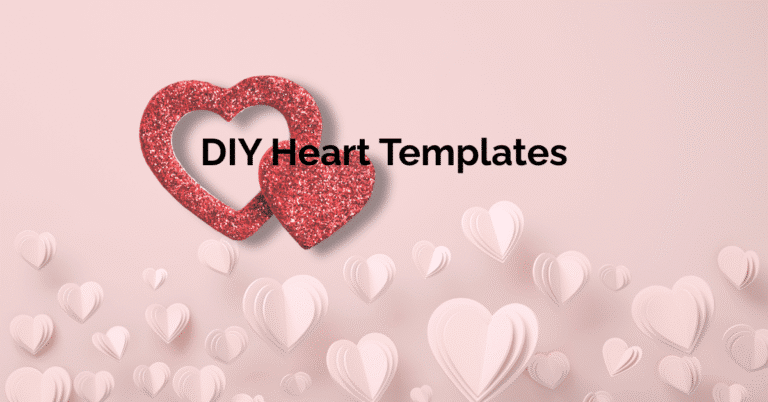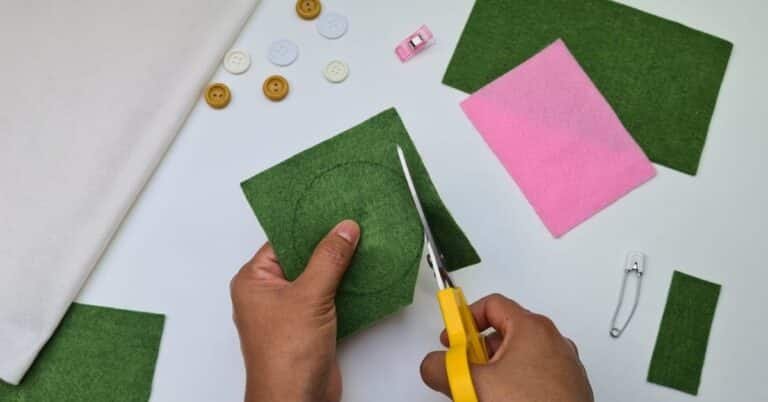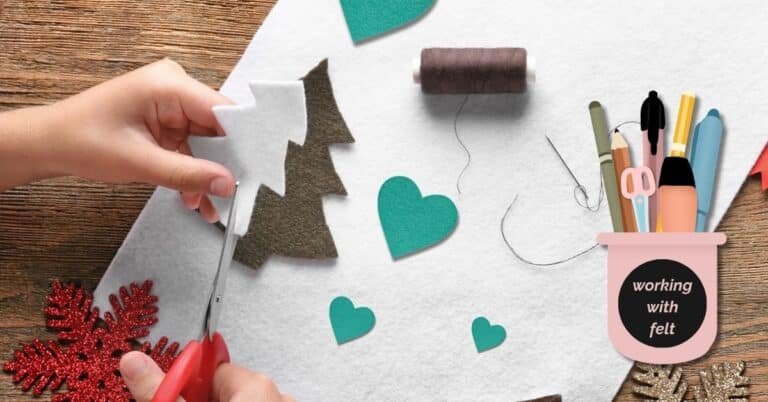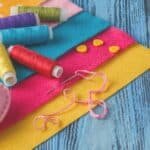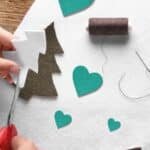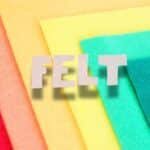Felt is one of the most versatile and beginner-friendly fabrics for crafting. Whether you’re making ornaments, toys, or home decorations, understanding the types of felt can help you choose the right material for your project. In this guide, we’ll explore what felt is, the different types available, where to buy it, and how to craft with it effectively.
What is Felt Fabric?
Felt fabric is a type of textile that is made by matting, condensing, and pressing fibers together, rather than weaving or knitting them. It’s one of the oldest known fabrics in human history, used for thousands of years across many cultures.
Types of Fibers Used in Felt
- Natural fibers: Wool, alpaca, or other animal fibers.
- Synthetic fibers: Acrylic, polyester, or nylon.
- Blends: A mix of natural and synthetic for balance.
How is Felt Made?
Felt is created through felting, the process of bonding fibers without weaving or knitting. The three main methods are:
Wet Felting (Traditional Method)
- Uses wool fibers, warm water, and soap.
- Fibers shrink and interlock with agitation.
- Produces soft, durable sheets of fabric.
Needle Felting
- A dry process using barbed needles to tangle fibers.
- Perfect for 3D sculptures, toys, and decorative details.
- Requires wool roving and patience for intricate designs.
Industrial Felting
- Uses machines to compress synthetic fibers like polyester.
- Heat, adhesives, and pressure bond fibers.
- Produces felt fabric by the yard for large-scale use.
Types of Felt Material
Wool Felt Fabric
- Made of 100% wool or high wool blends.
- Soft, warm, flame-resistant, and biodegradable.
- Premium option for crafts, wearables, and luxury goods.
Acrylic or Polyester Felt (Craft Felt)
- Synthetic and budget-friendly.
- Widely available, holds shape well.
- Popular for kids’ crafts and decorations.
Blended Felt
- Mix of wool and synthetic fibers.
- Offers durability with a softer texture.
- Great for versatile projects.
What is Felt Used For?
Crafting and DIY Projects
- Ornaments, toys, puppets, bookmarks, wall hangings.
Apparel and Accessories
- Hats, slippers, coats, handbags.
Home Décor
- Cushions, coasters, table mats, seasonal decorations
Upholstery and Soundproofing
- Furniture padding, wall insulation, noise reduction.
Educational and Sensory Tools
- Felt boards for storytelling.
- Soft sensory toys for children.
Pros and Cons of Felt Fabric
Pros
- Doesn’t fray when cut.
- Excellent heat and sound insulation.
- Eco-friendly (wool).
- Soft, versatile, vibrant dye absorption.
Cons
- Can pill with friction.
- Limited stretch.
- Wool may shrink when wet.
- Synthetic felt is not biodegradable.
Felt for Needle Felting
Needle felting is a creative process where wool fibers are sculpted with barbed needles. Common projects include:
- Miniature animals or dolls.
- Brooches, flowers, ornaments.
- Embellishments for clothing or accessories.
It’s a rewarding hobby for crafters and artists.
Caring for Felt Material
Wool Felt
- Hand wash gently in cold water with mild soap.
- Air dry flat; avoid wringing.
Synthetic Felt
- Sometimes machine washable (gentle cycle).
- Always check the care label.
General Care Tips
- Spot clean when possible.
- Store in a dry, cool place.
- Avoid direct sunlight and moisture.
Final Thoughts
Choosing the right felt fabric is essential for a successful project. Wool felt is durable and high-quality, synthetic felt is affordable and colorful, and blended felt offers a balance of both. Craft felt and specialty felts allow for creativity in all kinds of projects.
By understanding the types of felt, where to buy them, and how to use them, you’ll be well-prepared to create beautiful felt crafts, whether you’re making ornaments, accessories, or home décor.
💌 Happy crafting!

